
|   |

|   |
Madras Music Academy Annual Dance Festival 2015: Some Superstars and other slow clusters - Veejay Sai e-mail: vs.veejaysai@gmail.com Photos: Thanthoni January 29, 2015 The last performances, i.e. the 7pm slots were programmed radically different from all the older years in the Academy’s festival. It seemed like a deliberate attempt to showcase other dance forms. We saw a lot of Odissi, Kathak, Kuchipudi and Mohiniattam. As a matter of fact, the only show that had Bharatanatyam, had almost negligible amount of the actual dance in it. On the inaugural evening Kalakshetra presented ‘Paduka Pattabhisehkam,’ an excerpt from their Ramayanam series. ‘Slack and sub-standard’ is the best way to describe the production in one line. None of the dancers seemed to get into the roles they played. Flat expressionless faces and immature dancing did no justice to the wonderful music the production has. None of the characters were executed decently - Rama, Lakshmana, Sita, Bharata or Guha, the main set of people who kept the storyline going. One wonders if the Academy programmed Kalakshetra into the festival because they were obliged to do so? When any institution’s (even the most celebrated or well-established ones) productions are not up to any standard for a national festival, the Academy should have more discretion in their selection process. 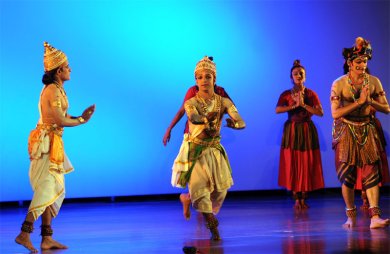 Kalakshetra 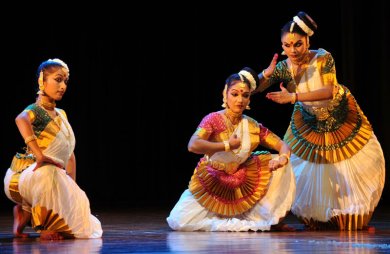 Pallavi Krishnan’s troupe The only Mohiniattam performance in the festival was by Trivandrum-based Pallavi Krishnan’s troupe. Exploring new themes with her choreography, Pallavi’s presentation was noteworthy. Taking a philosophical abstraction like the rise of Kundalini within the body and its journey through the seven chakras was interestingly explored with sensitive choreography. Pallavi’s solo as a virahini nayika in the famous Irayaman Thampi padam in ragam Behag, ‘Chenta sayaka roopa’ was excellent. Pallavi’s abhinayam is her strength and she showed us glimpses of it in this padam. Pallavi is easily one of the top class Mohiniattam performers we have in our country. One would wish to see more of her solo dance repertoire. If one had to pick an excellent live-music orchestra as being the best in the entire festival, it would have to be Jaikishore Mosalikanti’s orchestra for his group Kuchipudi performance. Kuldeep Pai’s singing and melodious voice have the single-handed power to restore the lost glory of Kuchipudi music. I haven’t heard such excellent singing, such fine involvement from a singer for Kuchipudi in at least half a dozen years. Added to this was Aadith Seshadri’s excellent nattuvangam (another wonderful asset to the dance community), T. Bhavani Prasad’s veena (why don’t we hear more of this excellent artiste in the kutcheri circles?) and Anantha Krishnan’s violin. The choreography of the performance explored various dimensions of the divine mother Goddess. Though some of the dancers in the troupe were not exactly in shape, as a production the performance came together. Here was a case where the music orchestra over-powered the dance performance by their sheer brilliance. 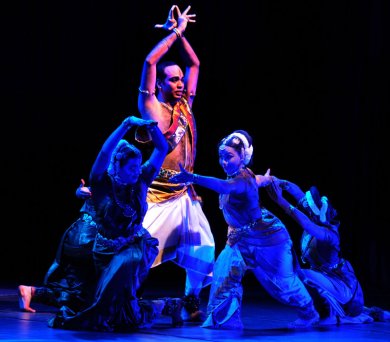 Jaikishore Mosalikanti & group 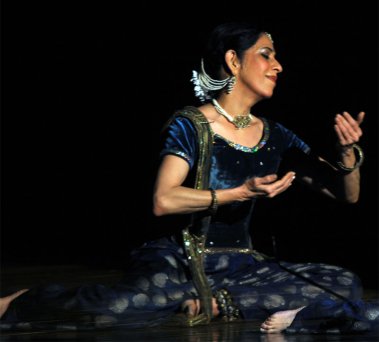 Aditi Mangaldas Aditi Mangaldas’s solo Kathak presentation ‘Immersed’ in the form of a triptych was a visual spectacle and a delight to watch. Aditi is easily one of the world’s top five Kathak dancers. Exploring the concept of ‘Krishna,’ Aditi migrates from the known iconography to the abstract mystical experience of the subject with excellent choreography. Though some elements like her costume in the first part and a consistently faulty microphone didn’t seem to work, one was ready to overlook these and get the essence of her performance. Inspired by content churned out of traditional sources and texts from Bhartendu Harischandra and music by the lovely Shubha Mudgal to several others, Aditi’s format of the show was refreshing. Be it using a shadow play and light technique to recreate a Raas Lila or the sheer brilliance of her unparalleled footwork, Aditi’s show was something the Margazhi audiences have never witnessed earlier. What more! This was the first time ever the cyclorama of the Madras Music Academy was ever utilized this effectively. Mohit Gangani on the tabla and Ashish Gangani on the pakhawaj were exceptional! Odissi ruled the last slot. There were not one or two but three widely different varieties and styles of the same dance showcased. The first Odissi performance was a solo by Sujata Mohapatra. This was also the first time one was seeing a solo in a slot that usually presents groups. With an earthiness to her dance, Sujata’s performance exhibited the rigor of traditional training and her own creativeness that she mildly used. Jayadev Das’s overt LED lighting did overpower her performance in patches. One wishes dancers could perform without the jarring effects of LED lights. 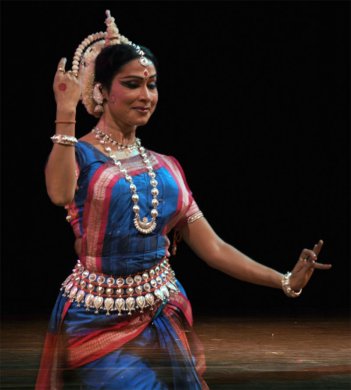 Sujata Mohapatra 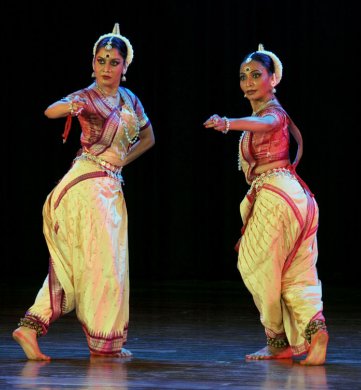 Surupa Sen & Bijayini Satpathy In every festival, music or dance, you often come across that one performance that you take back with you in your mind and heart. It leaves a lasting impression on your thought process in more ways than one. The duet ‘Songs of Love and Longing’ by Bijayini Satpathy and Surupa Sen of the world famous Nrityagram Ensemble was one such performance. If you wanted to see and experience how the magic of good choreography can transform known content, this was the performance to watch! With fantastic lighting by Lynne Fernandez, an excellent orchestra, as both the dancers performed excerpts from the Gita Govindam, the kind of spectacle they created took Odissi to another level of sophistication. Nrityagram can create a spectacle out of thin air! Other dancers can take a lesson or two from them in presentation. Performed to recorded music, the third and last Odissi presentation in the finale of the festival was by Bhubaneswar-based Rudrakshya Foundation headed by Guru Bichitrananda Swain. The music was beautiful with excellent mardala. Though the repertoire was a totally new one from what has been presented over the last few years, the choreography needs to be fine tuned some more and some of the dancers definitely need to get in shape. One expects Odissi dancers to be slender and sensuous with lyricality in their body movements! The final slots had their share of good, bad and boring. In the end what clearly came across was how Odissi and Kathak ruled over the heartland of Bharatanatyam. The Academy must invite curators with a wide experience who can help them curate this slot better. Until next year! Veejay Sai is a writer, editor and culture critic. |